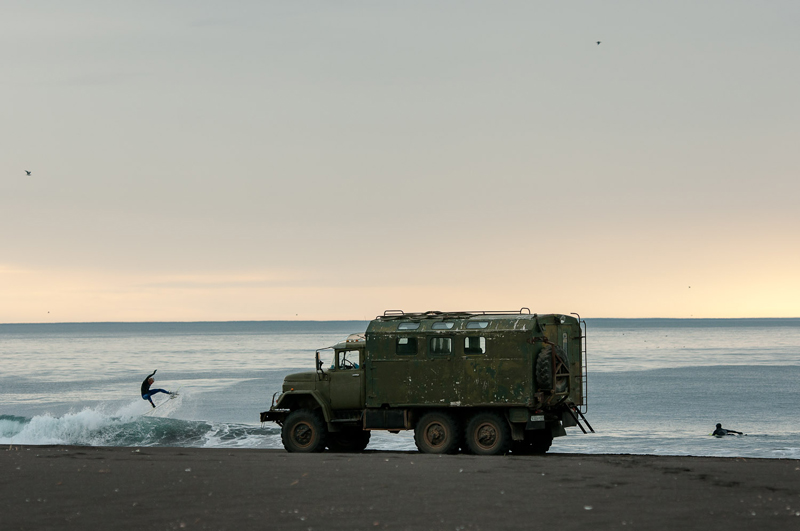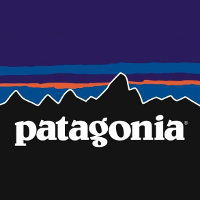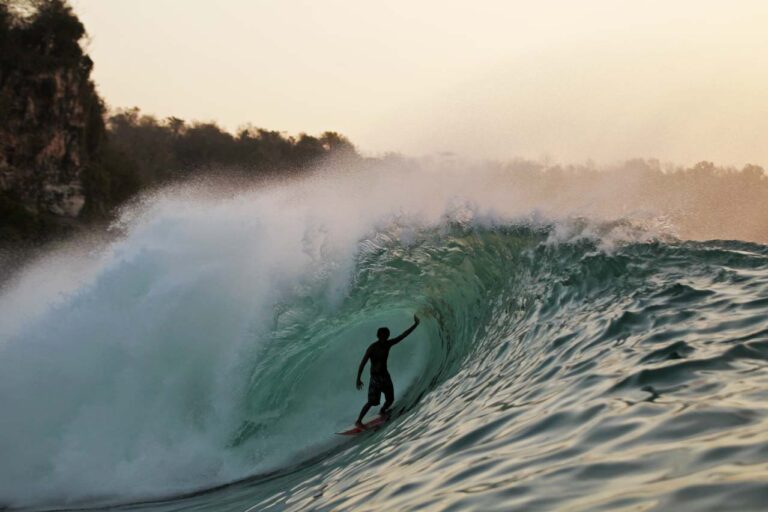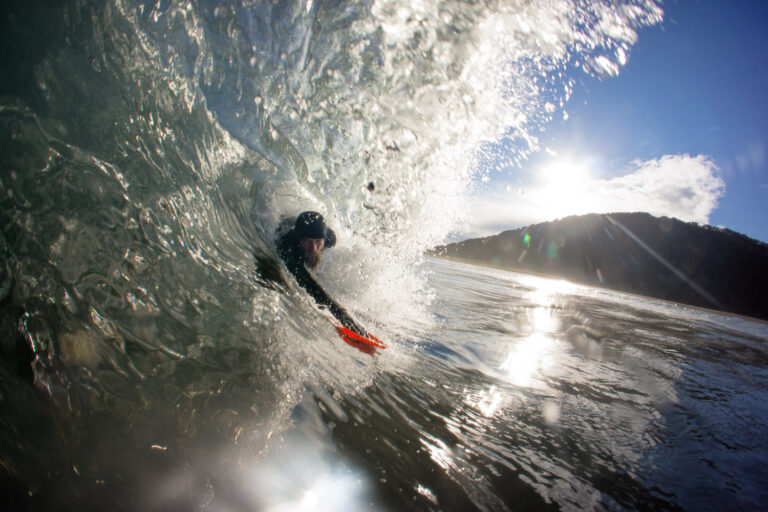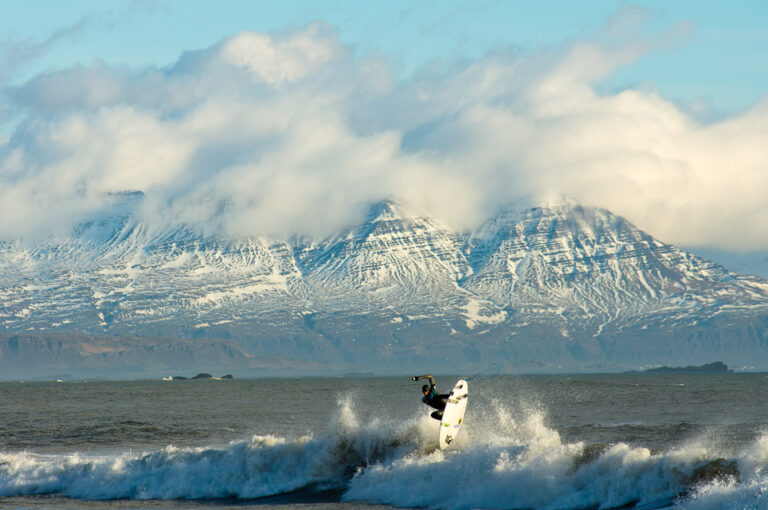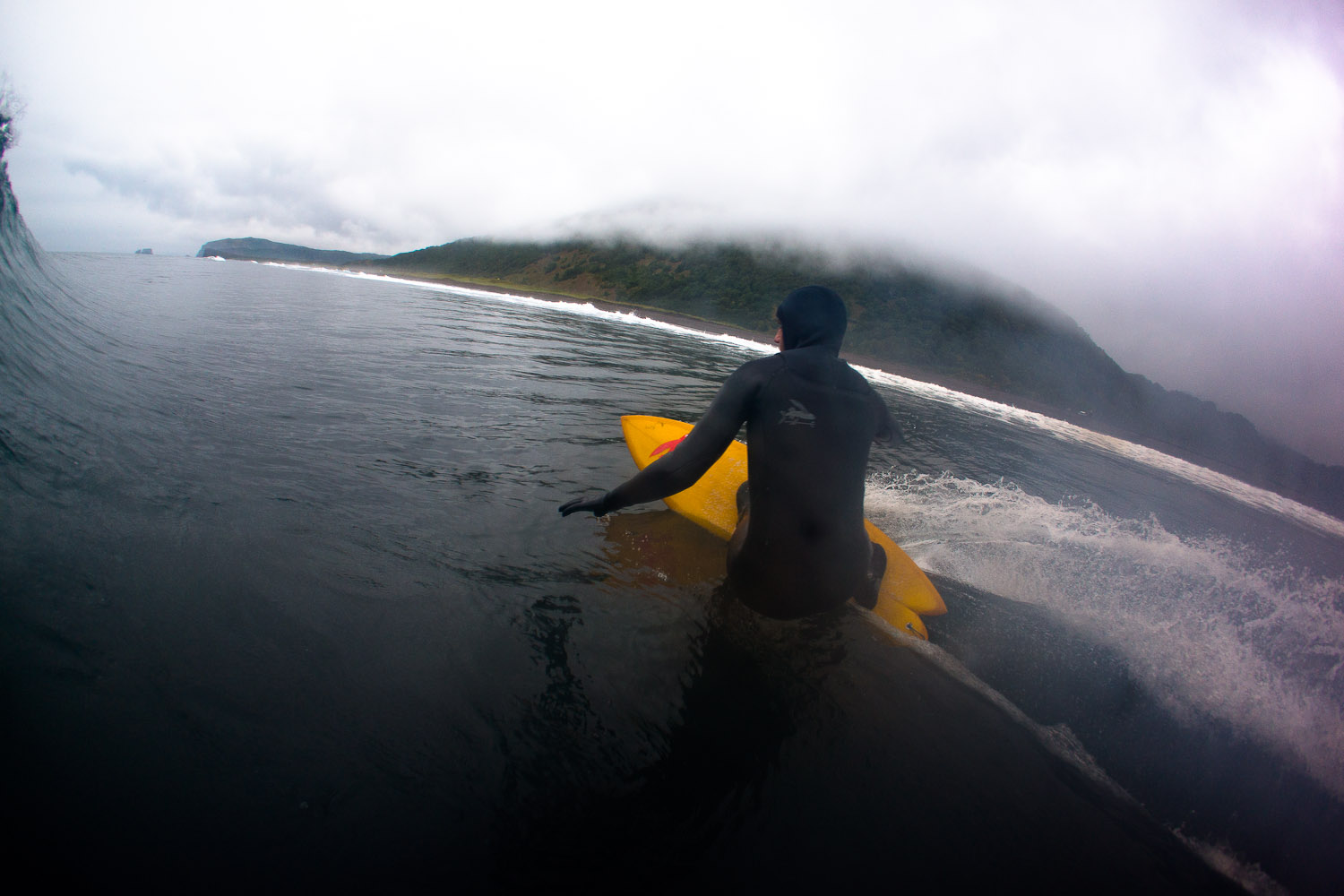
Deciphering the bewildering facts about Russia’s Far East
By Ben Weiland
Photography by Chris Burkard
The Kamchatka Peninsula is part of Russia’s Far East. The region is a neighbor to Siberia—but more remote, with worse weather, and with more bears. It straddles a crack in the earth’s surface called the Ring of Fire and houses the planet’s largest collection of active volcanoes. Here, all sorts of pressurized, hot, fowl-smelling stuff creeps to the surface from the depths of the earth. Monstrous purple cones preside over the landscape. Glaciers robe their flanks and smoke steams from their crowns.
Yet despite all its prehistoric geology, we found the peninsula to be a camping utopia. Stereotypes of damp clouds and putrid soups melted away. For days on end the sun awoke blazing red and ascended into beaming blue skies. By mid-morning Kamchatka’s black-sand beaches baked. Hot breezes swept from the mountains and out to sea. According to locals, there hadn’t been a summer this good in years. The waning days of summer couldn’t have cleared a better path for exploration.
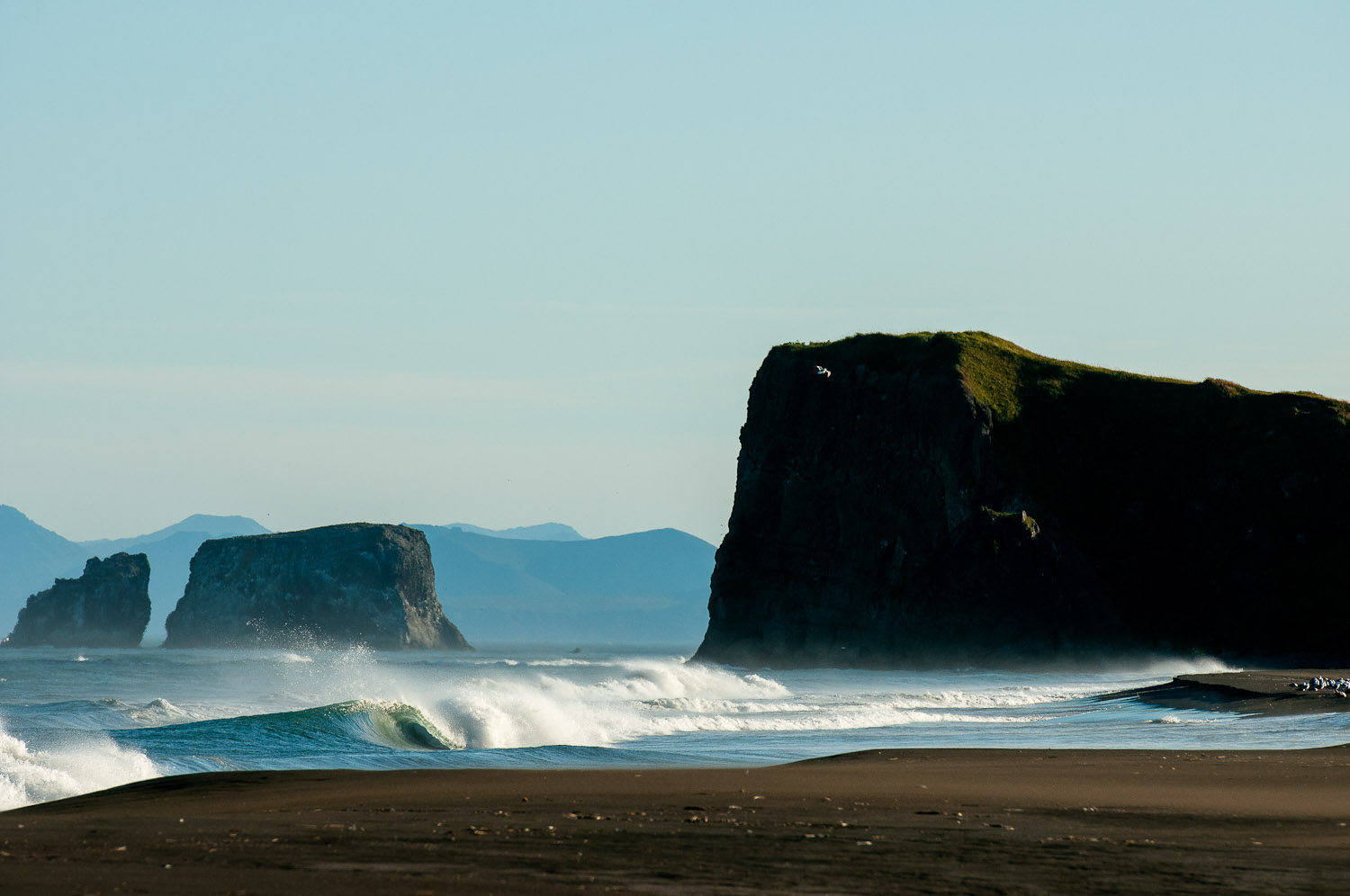
The truck as it crawled along the beach. Keith Malloy studied the sea from the roof. His skin was burnt, his beard crisp, his eyes thin slits shielding glare. A set approached. He knocked on the driver’s cab and the truck stopped. He squinted through binoculars. A few miles away where a berm of sand met the sky, along the top edge, air trembled in the heat. Beyond it, an offshore wind blew white plumes from wave tops. But it was an empty promise. The break sat on a restricted military base.
We weren’t surprised. Russia’s military permeated the entire region—politically, economically, and culturally. Twenty years ago Kamchatka was restricted to all outsiders—even Russian civilians. The Soviets had built a top-secret submarine base in a deep blue glassy bay tucked between steaming mountains. To navigate the peninsula’s twisted terrain, soldiers drove armored 6-wheel trucks. The trucks could also access geothermal research facilities scattered throughout the interior.
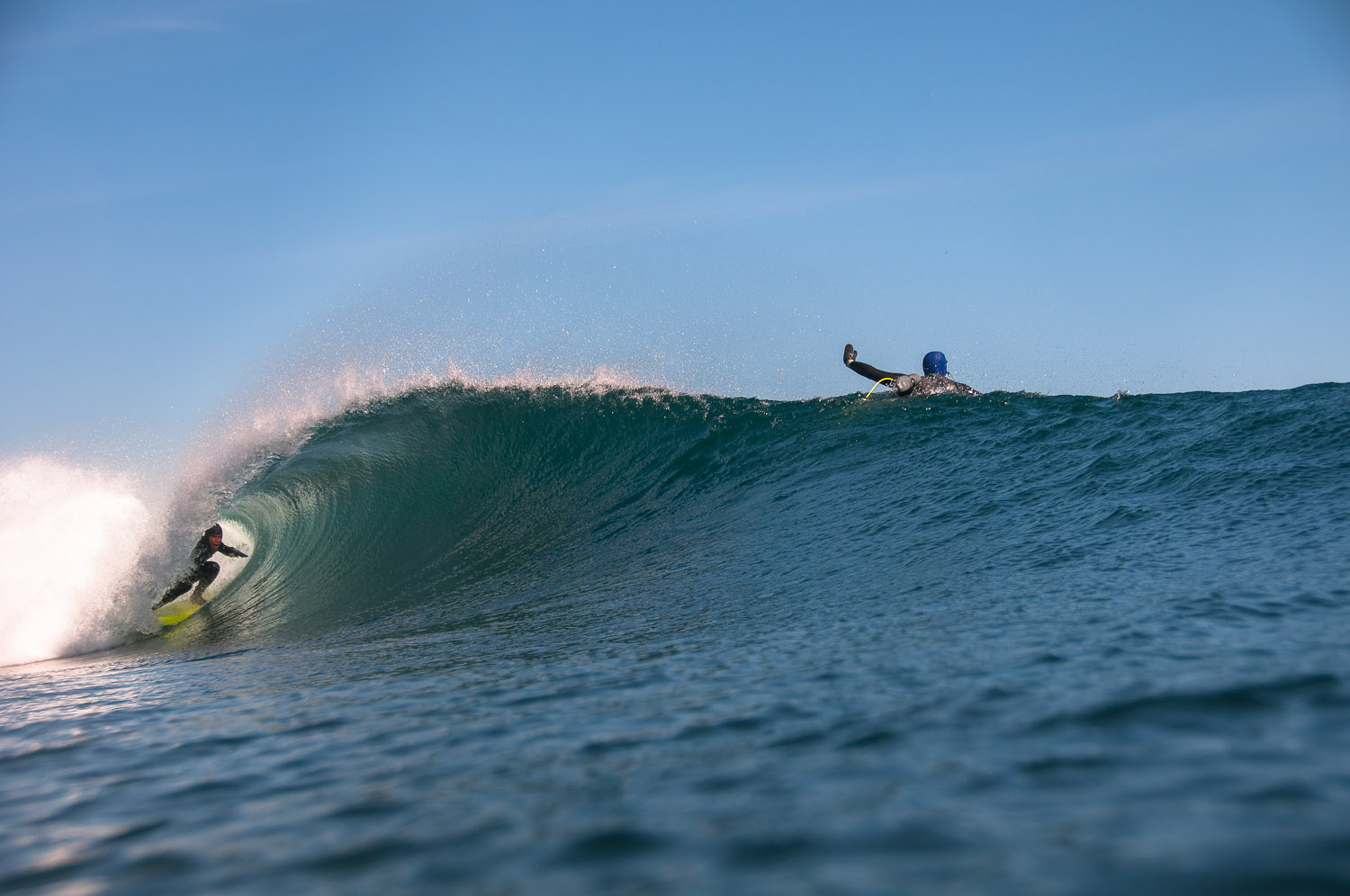
Each of the vehicles had design variations, but they all shared the same basic concept: a driver cab up front and an eight-person cabin on the back that looked like a portable bomb shelter. When the Soviet Union collapsed, Kamchatka opened to the world. The military budget atrophied and many of the trucks were sold to civilians. Twenty years later they were still the best way to get around. Sergei – our mad captain commanded a truck that had enough space for our boards, food supply, fishing stuff, and camping gear. Still, despite Kamchatka’s 20 years of being open, the military held a stiff grip on all its territories. Even in our roaming bomb shelter we couldn’t get anywhere we wanted to.
In the morning the sun didn’t appear. A layer of damp cloud muddled the sky. Soup weather. First, our campfire ran out of wood. Intermittent showers extinguished the flames and the fire waned into a wisp of smoke. Then, sometime around mid-morning, a small pulse of swell appeared. Keith borrowed Cyrus’s alaia. He planed across a waist-high wave when backwash ripped through the water and smashed the board against a shallow sandbar. The impact exploded half of the alaia into toothpicks. The other half held tight. Keith scooped the debris under his arm and headed back to camp.
“I’ll save the large pieces,” Cyrus said as he examined the board. “I can glue them back together.” He packed the big pieces and fed the alaia toothpicks to the fire. We strung a 20-foot tarp from the side of the truck and propped up the outer corners with a surfboard and the remaining half of the alaia. For ten hours we huddled in that dry square. The rest of the campsite got soaked.
Camping wasn’t recreational, it was work. We woke up with stiff necks, became acquainted with cold river baths, and trailed the aroma of burnt brush wherever we went. Our hair mutated into something that looked like a rodent’s nest. The sheen of civilization slid off of us, a layer of dirt replaced it, and we adapted. We streamlined. Essentials and inessentials became clear. A few of us began to wear the same clothes everyday. We called it The Uniform and it became a part of us. It saved the excess time and energy required to be concerned about appearance and we reveled in the freedom.
Miraculously the soup weather didn’t last long. It was morning again and the black sands cooked. Blueberry bushes carpeted the ground all around our tents. Trevor and Cyrus harvested handfuls and sprinkled them in their oatmeal. The land also provided fish. Rivers teemed with salmon. At times we didn’t even need fly-rods. So many salmon squeezed in at the river mouth that a small wave would wash a few of them up onto the banks—we used our hands to grab them.
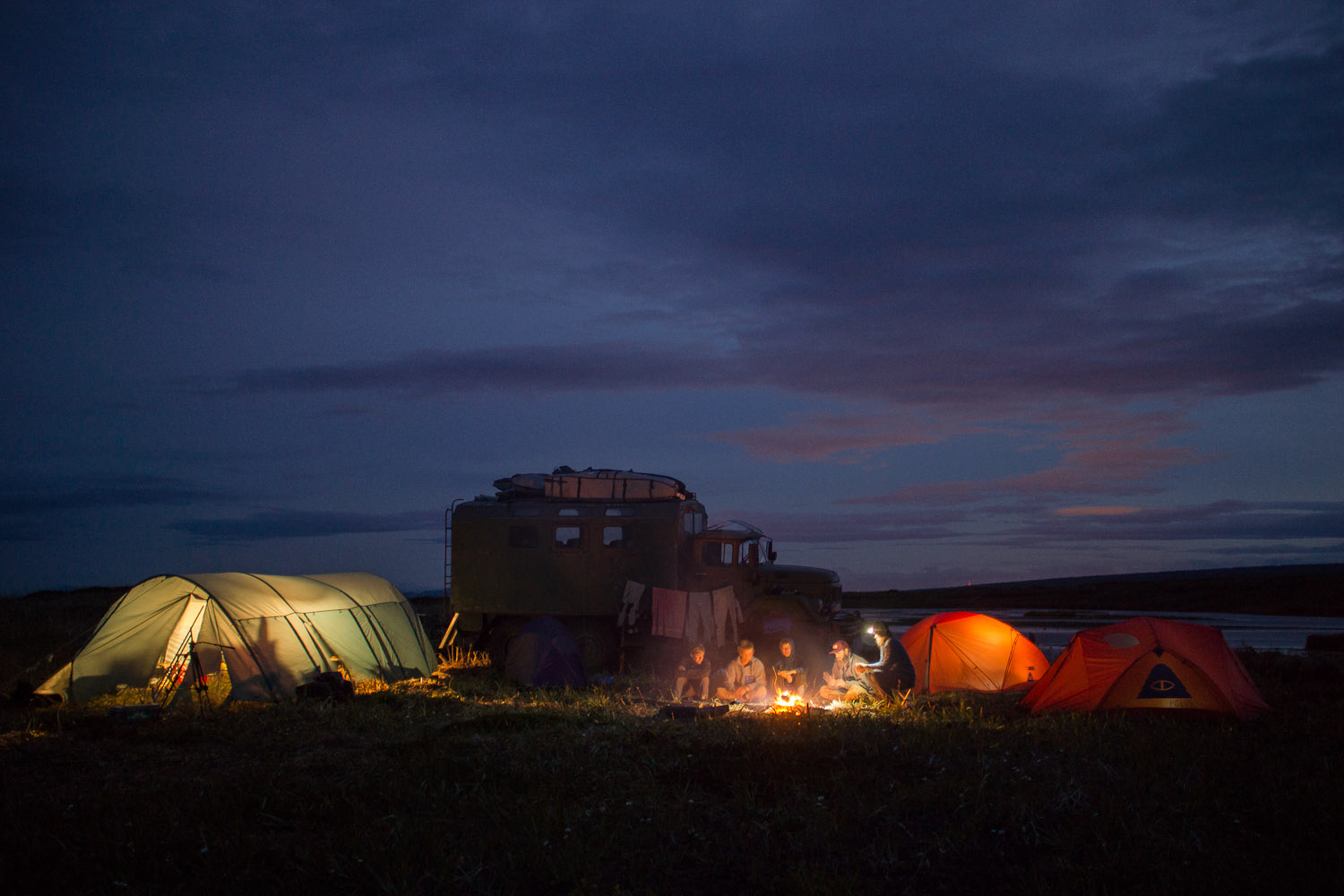
We weren’t the only ones who enjoyed fishing. On our way back from the coast we stopped at a river. All along the gravel banks, a trail of traction-pad sized footprints marked a recent bear patrol. But bears were always a few steps ahead. They left footprints still wet, scat still warm, and holes in the forest with leaves still trembling. They were never seen but ever present. Most often they would keep to themselves, busy scooping fish and protecting their young. But every once in awhile their coolness unraveled. There was a story going around about a group of scientists that had been trapped in a cabin by 30 hungry bears, each ten feet tall.
Would Sergei have a gun with him? No—we wouldn’t resort to such defenses against these family-oriented monsters—not in this day and age. Staying safe was a matter of being cautious, smart, and acutely aware of your surroundings. Anyways, we had other ways to discourage bears, like two car batteries whose electrodes connected to a sparking fence that established a live wire perimeter around our camp at night. And most of the bears were still north during this season eating nuts, so Keith felt safe hanging his catch from the mirror of the truck that night.
We sat around the fire and studied a map. Sergei advised us on which beaches we could access by truck. A solid south swell was scheduled to arrive in two days. In the mean time, a smaller swell might make it into a zone further up the coast where mountains splayed into the sea and produced miles of unexplored angles, turns, and coves. It was promising. But there was no way to get there by land.
